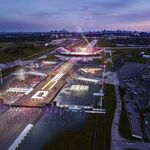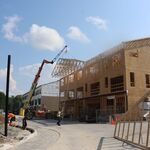lenaitch
Senior Member
Operations is one thing; the upfront capital cost is another. Either way, operating a bus or five is a whole lot cheaper that a heavy rail line. You need this economy to pay for the next one and I doubt the County taxpayers would be willing to foot the bill. Many of them would realize no benefit.Thinking in terms of funding a commuter or 2WAD service to Collingwood, I wonder if there exists a mechanism for the county to partially fund operations? Line 2 of the LINX bus service already hits the major town centers between Allendale and Collingwood (minus Cwood itself, of course). Notwithstanding the increased O&M of trains versus buses, it would be a useful backbone with value to the county by itself, let alone the value to the GO network (further range, increased catchment area, etc).
This discussion seems to bounce back-and-forth between a tourist train and commuting.
I would think that would only catch a portion of the market. Not everybody can or does ski all day, particularly if you have kids, and who's going to sit around waiting for train time. It also ignores night skiers, which is incredibly popular.I'd assume 1rrain each way on Saturday and Sunday would be all that would be needed beyond Allendale




